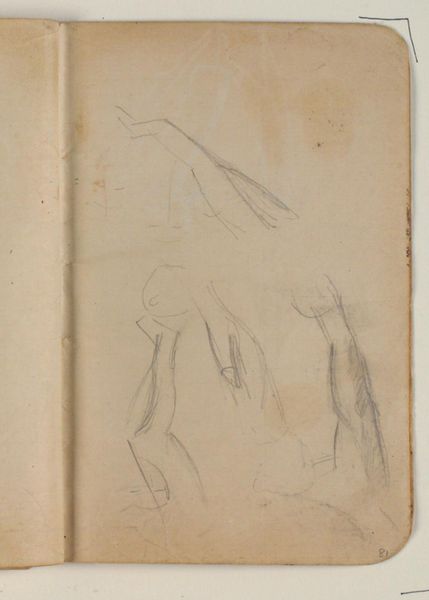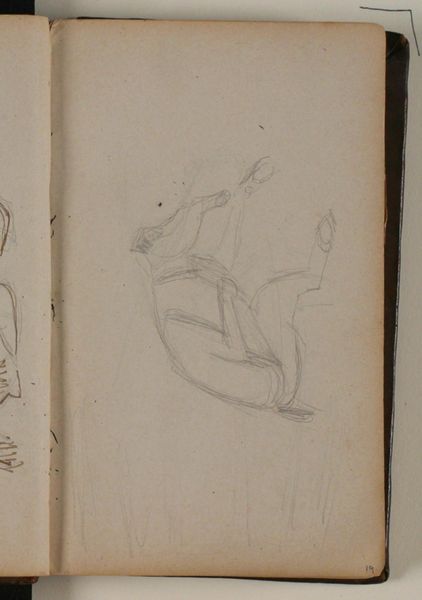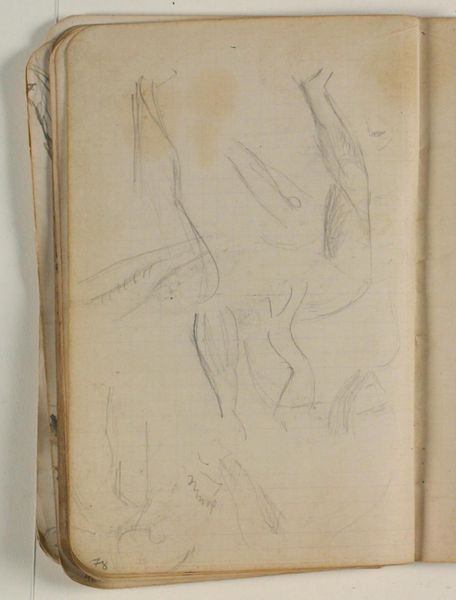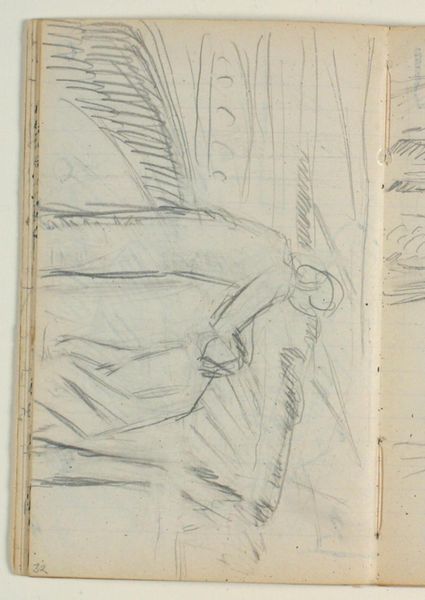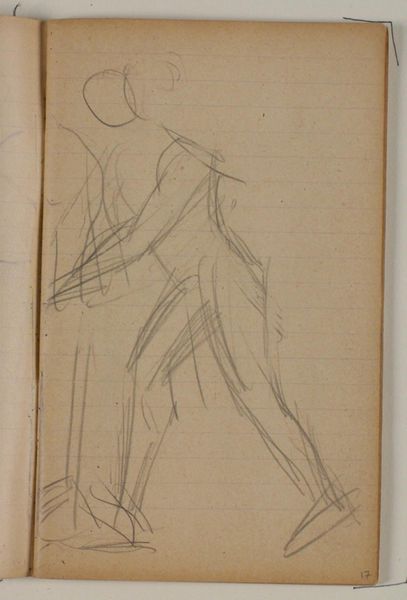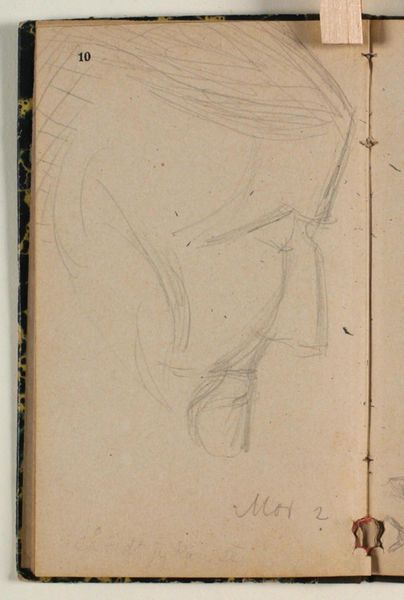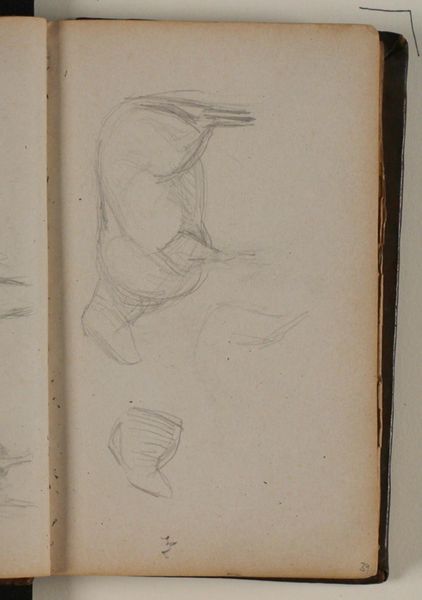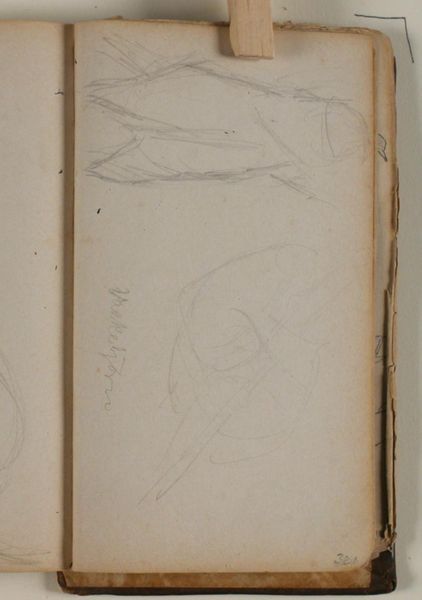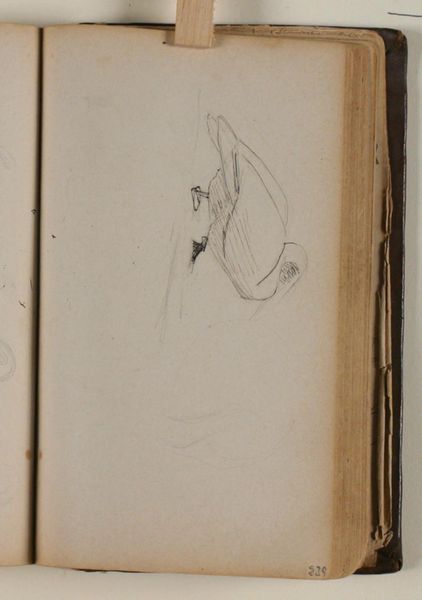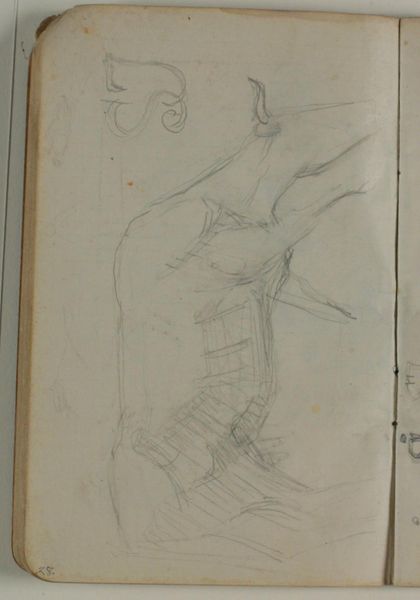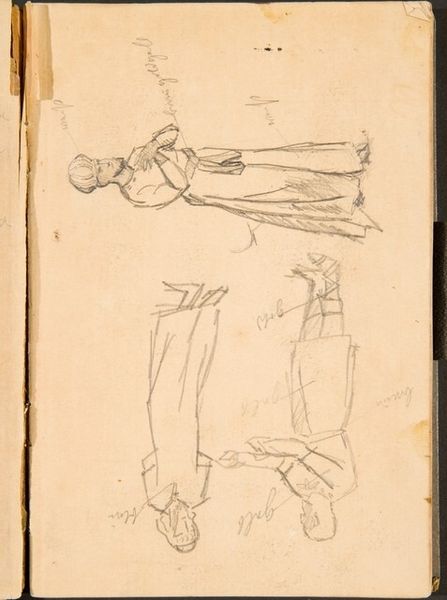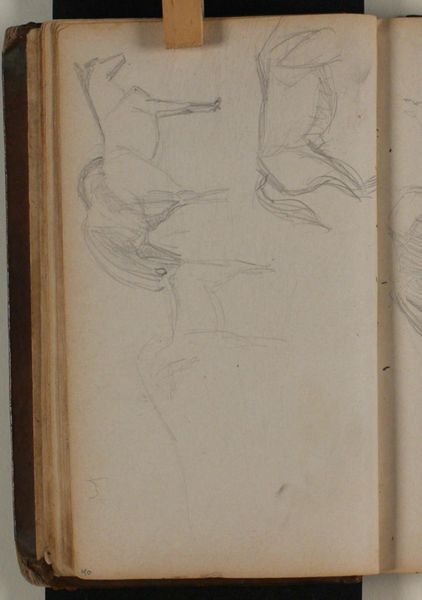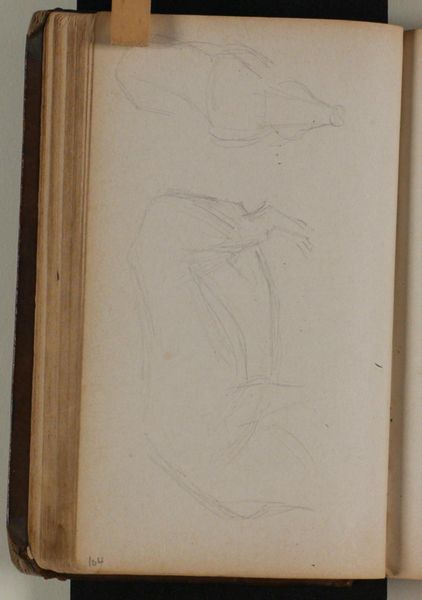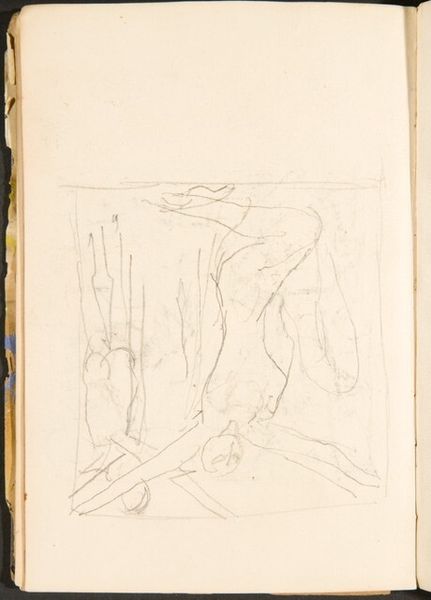
drawing, pencil
#
portrait
#
drawing
#
figuration
#
pencil
Dimensions: 162 mm (height) x 98 mm (width) x 23 mm (depth) (monteringsmaal)
Curator: This sheet presents "Studies of Hand and Forearm, Figure Sketches" by Niels Larsen Stevns, dating roughly from 1864 to 1941. It's part of the collection here at the SMK, Statens Museum for Kunst. Editor: Immediately striking is the tentative nature of the lines. It's all soft graphite, searching for form. A kind of vulnerability, I think. Curator: It is interesting how this work fits within Stevns’s broader focus on religious and monumental subjects. These studies offer a glimpse into the academic rigor that grounded his more public-facing art. There's a tradition, of course, of the artist using the human body as a testing ground for ideas. Editor: True, and visually, the upward thrust of that forearm – almost like a beacon amidst the smaller figure studies – dominates the composition. It is raw. Stripped bare. There's an expressive power there. Curator: One might even consider how artistic academies historically used drawings of this sort to create and impose very particular standards about the representation of the human body – and this has all sorts of implications around gender and race. But at the same time, sheets of studies, such as this one, are often far from academic orthodoxy. Here, Stevns appears to be freeing the body. Editor: Freeing, yes, because those sketches don't adhere to a strict anatomical reality. The beauty is in the gesture, in the suggestive lines hinting at human form. Curator: The intimacy of a sketchbook allows that freedom. Unlike his completed works meant for public consumption, these are working sketches which are far less censored in style and spirit. Editor: Agreed. It is fascinating that Stevns included a multitude of incomplete sketches to present various forms instead of laboring on a single perfect representation. It makes you consider the politics of completion within art. Curator: Indeed. These seemingly informal sketches reveal how socially determined conventions can shape artistic practices. Thank you for lending us your discerning observations, this has given me pause to think more closely about how we can view figure drawing through the lens of our history and beliefs. Editor: It has been my sincere pleasure to do so; for me, the hand in particular symbolizes that constant endeavor to find form, a never ending quest which all can appreciate.
Comments
No comments
Be the first to comment and join the conversation on the ultimate creative platform.
